It is essential to keep your tires adequately filled with air. Underinflated tires can suffer from overheating, uneven wear and less efficiency. However, it can sometimes be inconvenient to take your flat tires to a professional. In that case, it is helpful to know how to fill a tire using an air compressor on your own.
The first step is to make sure you have the correct tools for the job. Otherwise, you won’t be able to safely and effectively fill your tire to the proper specifications. You will need several tools, including:
The two most common types of tires you can fill at home with an air compressor are car and bike tires. You can also use an air compressor to fill the tires of dirt bikes, lawnmowers, tractors and other equipment. Here are the basic steps for filling tires with an air compressor:
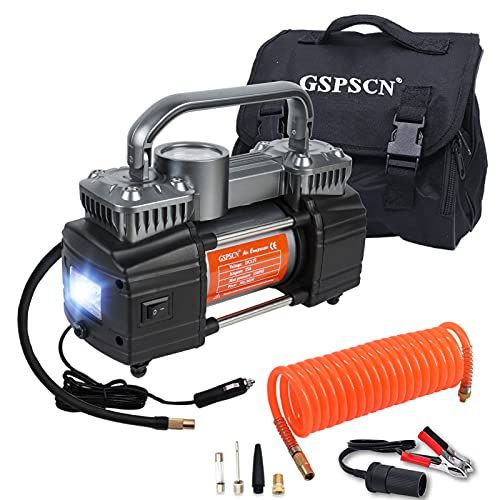
While the basic method of filling tires is the same, knowing how to fill a bike tire with an air compressor is slightly different from a car tire. There are several variations, including:
Understanding these differences is vital in knowing how to service your bike tire with an air compressor.
Air compressors can help refill tires on cars, bikes and other equipment. There are some differences across each tire type, but the process is mostly the same. With Quincy Compressor, you can find the perfect air compressor to fill up any of your flat tires on your own. Contact us today for more information, or explore our portable air compressor options!
There are some differences across each tire type, but the process is mostly the same. With Quincy Compressor, you can find the perfect air compressor to fill up any of your flat tires on your own. Contact us today for more information, or explore our portable air compressor options!
If your car tires need a little air, you can always pull into the gas station to use the machine. However, you may not know how to use a gas station air pump, or you might be confused about how to properly inflate your tires.
In this guide, we walk through all of the steps with you, so you can pump up the car tires properly. Additionally, we show you some hidden benefits of using the gas station air. We also review the benefits of maintaining proper tire air pressures.
How to Use a Gas Station Air PumpTo use a gas station air pump, you need to find the air compressor and park near it. Once you remove the air nozzle, you can pay for the air and adjust the settings.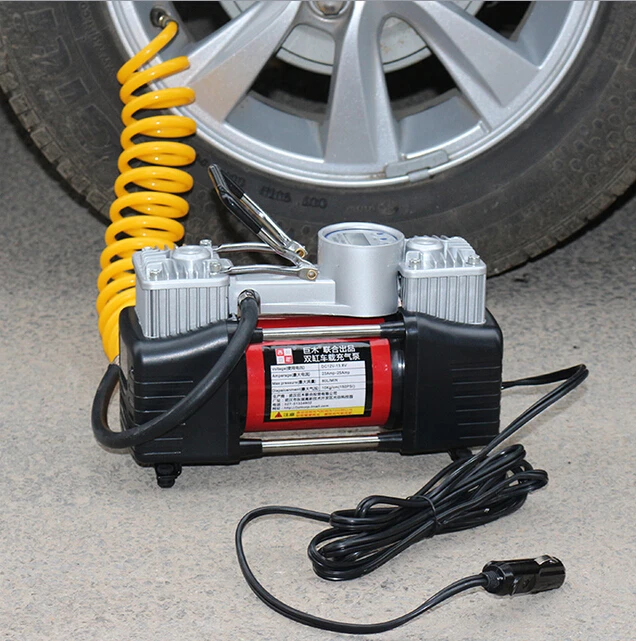 Remove the tire valve cap and inflate the tires. Check the pressures when you are done and return the hose to its original place.
Remove the tire valve cap and inflate the tires. Check the pressures when you are done and return the hose to its original place.
Here are more detailed steps on how to use the gas station air pump:
1. Locate Air CompressorUnless you have used the air pressure machines before, you might not know where to find them or understand what they look like. Normally, the air machines aren’t right with the gas pumps, but off to the side somewhere.
There will be a sign on the machine that indicates its purpose. You might even see something, such as “Free Air.”
2. Park Near the CompressorAfter you locate the air pump, you need to park as close as possible to it. The hose should be able to easily reach the tire or tires that need to be filled up.
If you park and realize you are too far away, just inch it a little closer. You can leave the car engine running to make it easier.
3. Remove Air NozzleInspect the air hose to make sure it is in decent condition. If it isn’t, you might want to choose a different machine to use.
If it isn’t, you might want to choose a different machine to use.
Once you’ve approved the hose, you want to move it to where the tire is, especially if you are paying for it. You want to be ready to fill up those tires when it goes on.
4. Pay for MachineSome machines are free and you won’t have to pay anything. Other times, you will be required to enter some quarters or use your credit card to get it started.
If you don’t have quarters, you might be able to get some change from the gas station. Once the money is inserted, the air will turn on for a specified amount of time.
5. Set Appropriate PSI MarkSome machines offer settings for the PSI. You can find this number on the card mounted on the inside of the driver’s side door jamb.
This measurement shows what the tires should be inflated to. Adjust the settings to match this number. If the machine doesn’t offer this, you will need to keep a close eye on how much air is being put in the tire.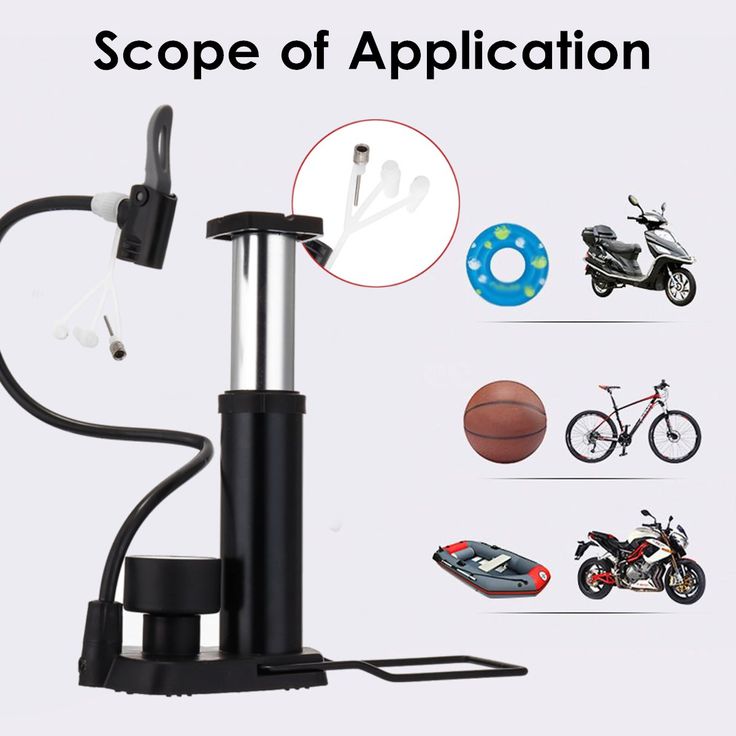
RELATED: How to Find the Correct Tire Pressure For Your Car (4 Steps)
6. Remove Tire Valve CapOnce the air hose is running, you want to remove the cap on your tire valve. Don’t misplace this tire cap, or the air could leak out while you drive.
However, if you ever lose a cap or one gets broken, they aren’t expensive to replace. You can find them at most auto parts stores.
7. Inflate TirePush the end of the nozzle onto the valve stem of the tire. You will need to apply some pressure to make the fit secure.
Once you have them connected, air will flow into the tire. Once you have reached the target PSI, remove the hose nozzle from the tire valve. If the air pump has an integrated pressure gauge, you can do both these steps at the same time and inflate, release and check the pressure.
8. Check PressuresYou should always double-check the air pressure to ensure it is right. If the tires are still low, go ahead and put more air into them.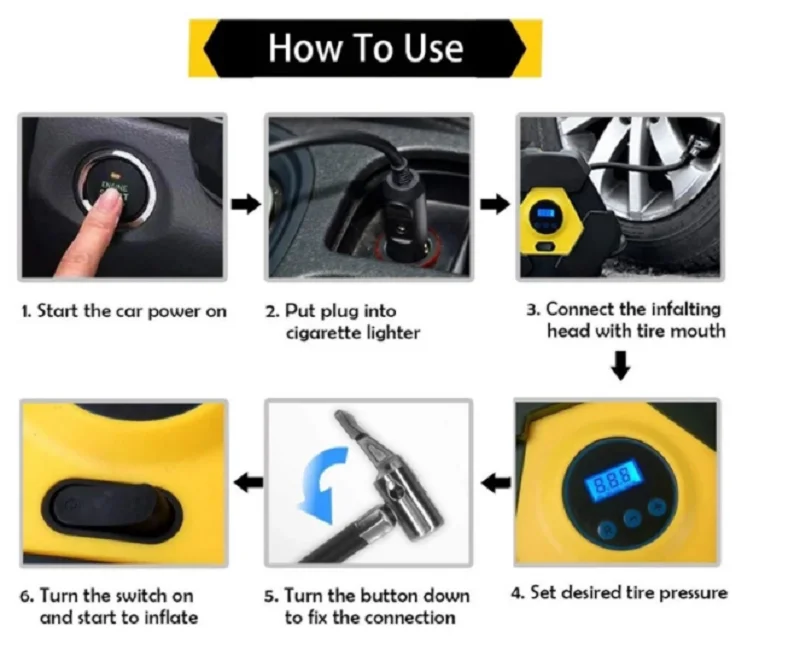
If you have overfilled the tires, you will need to push gently on the valve stem to remove some air. Either way, it should fall right in line with what’s on the door jamb.
9. Return Hose to MachineAfter the tires have been pumped up, you are ready to put the equipment back. Put everything in its place where it belongs, not necessarily where you found it.
It might be tempting to throw the hose on the ground, but this only ruins it for the next person. Just think about how you would feel if you needed air in a tire and the hose was destroyed because of negligence.
RELATED: How to Reset Tire Pressure Light (TPMS) – By Car Model
Benefits of Using Gas Station Air PumpThere are many reasons to consider using the gas station air pump when your vehicle tires require pumping up. For starters, you might be able to find a free air pump, meaning you won’t have to spend anything. In fact, several states require that the air pumps be free to use.
Additionally, the gas station air pump is going to be available 24 hours a day. If you are driving home after a late night, you can still ensure that your tires are properly inflated. The gas station air pump is also quick, so you won’t be spending a lot of time waiting around.
When emergencies happen, it isn’t always convenient to drive all the way home. Plus, it might not be safe if the tires are getting low. Instead, swing in the gas station and pump them up so you don’t have to wait in line at the nearest tire center.
Why Maintain Proper Tire Pressure1. Increased Fuel EfficiencyWhen the tires become underinflated, gas mileage gets thrown out the window.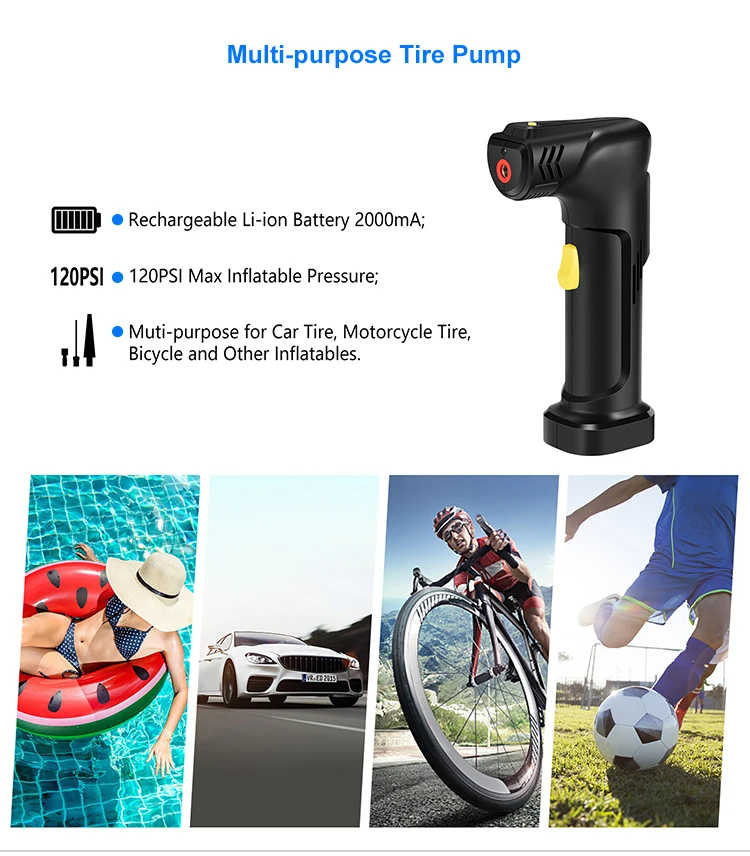 As friction increases on the road surface, you pay more to operate your vehicle.
As friction increases on the road surface, you pay more to operate your vehicle.
While you might only lose a few miles per gallon, every penny counts. This is especially true when gas prices are on the rise.
RELATED: Is It Dangerous to Drive with Low Tire Pressure? (& What to Do)
2. Increased SafetyTires with excessive amounts of air inside can blow out on the road. The sudden loss of air can lead to an accident and injury.
An underinflated tire is just as dangerous. If it goes flat unexpectedly, you could be in a lot of trouble.
3. Better Handling/GripWhen the car tires are underinflated, they are more susceptible to hydroplaning. It’s easy to lose control of the vehicle when this happens.
Additionally, with the right tire pressures, you gain more traction. This added grip allows you to brake better, accelerate easier, and navigate varying terrains.
4. Longer Tire LifeUnderinflated tires are going to wear out much faster than those at appropriate levels.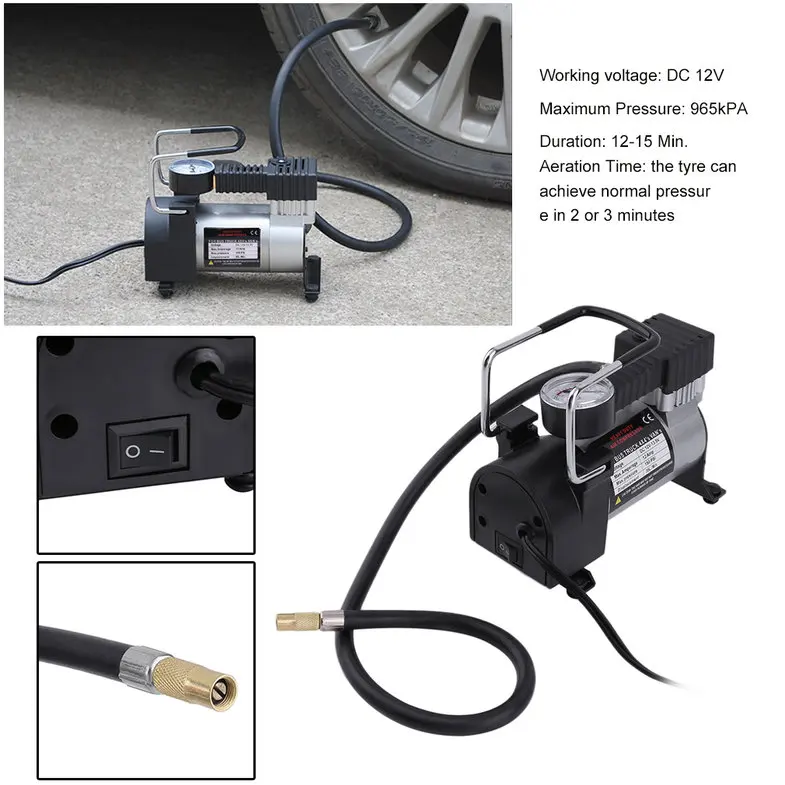 If you want to put tires on the car less frequently, it’s important to keep them running with the right pressures.
If you want to put tires on the car less frequently, it’s important to keep them running with the right pressures.
You should check the tire pressures every month, at a minimum. Aside from this, you should double-check the pressure when the temperature drops or rises significantly. For every 10 degree change, the PSI can change by 1. Based on this, any sudden change could dramatically affect the pressure inside the tire and could put you in danger if you aren’t careful.
Categories: Tires, Guides
An air pump is a mechanical device for pumping compressed air into various containers. Unlike an electric compressor, human muscle power is used to operate it. This allows you to use the device in any conditions. In addition, the absence of electrical components ensures low cost compared to compressors.
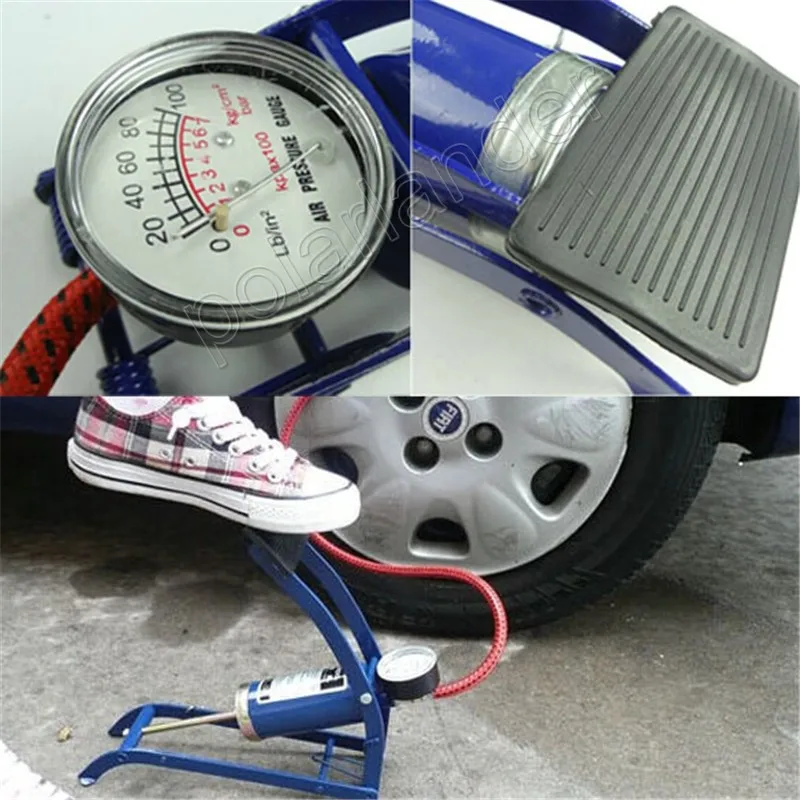
This is a must have in the trunk of almost any car. It is used to inflate tires. The pump has a flexible hose with a special nozzle that allows you to connect to the wheel valve.
Involves the use of hands. It is a low stand with stops at the bottom and a handle mounted on a moving rod. To work, it is necessary to step with one or two feet on the lower stop of the device and, holding the handle, pull and lower the stem with your hands. The principle of operation of such a device is almost identical to a medical syringe, which is used for vaccination. Raising the rod with the handle up, air is drawn into the pump chamber, and when squeezed, it is forcibly squeezed out through the hose into the tire.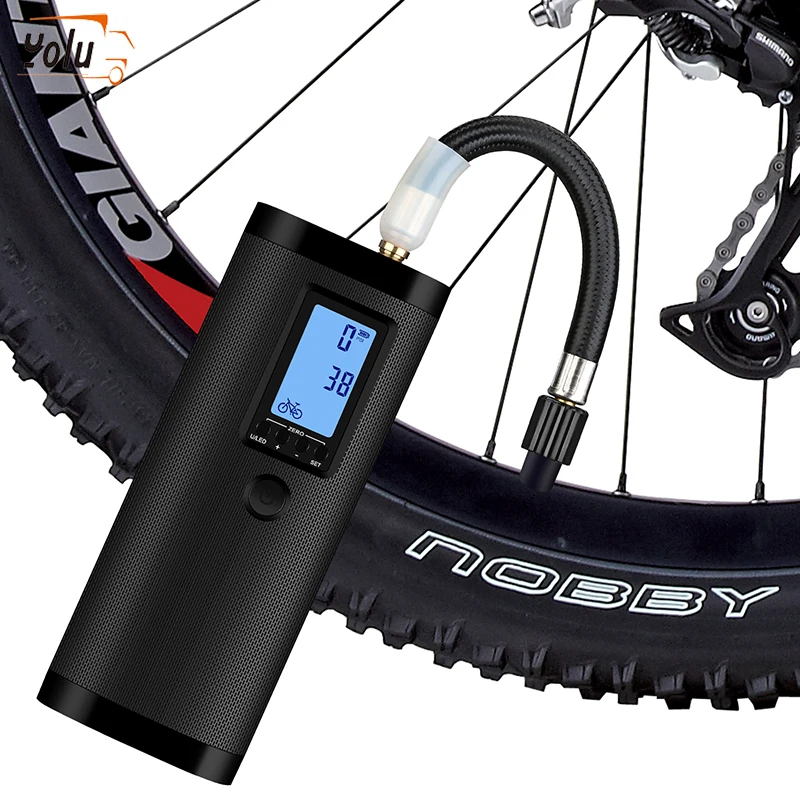
It is rather difficult to work with such equipment. If it is necessary to pump up large-diameter wheels, for example, in an SUV, it is quite possible to pull muscles out of habit. To minimize fatigue, the pump must be used correctly. When moving the rod with the handle, you should try not to work with your hands, but to unbend and bend your back. The back muscles are more resistant to stress, so the tires can be inflated much faster without taking long breaks.
Shorter but with larger diameter air chamber. They are installed on the floor, after which pumping is carried out by pressing a special pedal with the foot. Such equipment will be more preferable for girls, as well as people who suffer from back pain, so they prefer to minimize bending. Pressing is carried out with one foot. As you get tired, you can alternate legs. Although this design is very convenient, but as practice shows, hand pumps are more durable. In the event that you want to purchase an instrument once and for many years, then it is better not to buy a foot device or choose a really high-quality copy, the cost of which will be appropriate.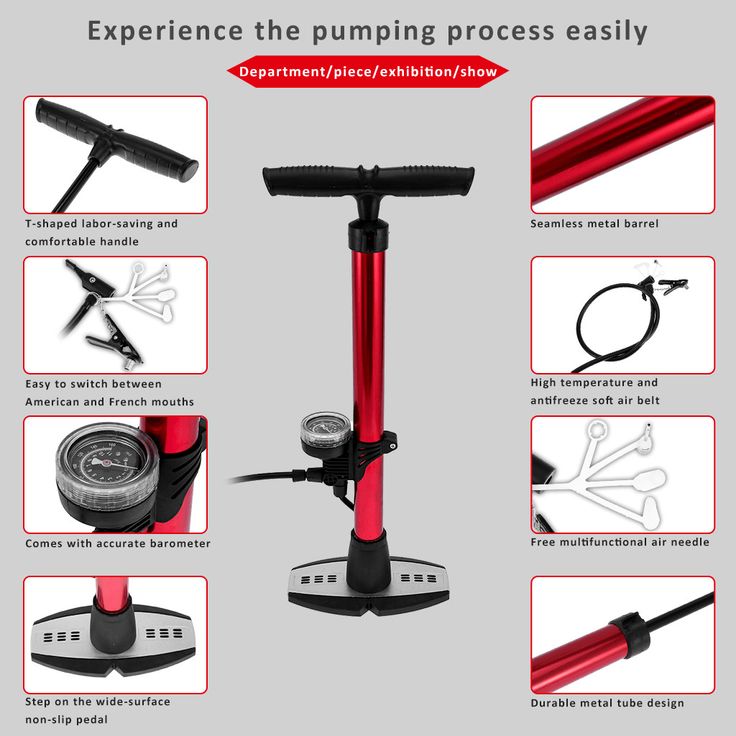
Automotive hand and foot pumps are often equipped with a built-in pressure gauge. Thanks to this, it is possible to carry out pumping tires immediately determining the degree of pressure. If there is no built-in pressure gauge, then it is worth purchasing it separately to control the process. Having pumped the wheel to approximately the required parameters, you need to disconnect the pump nozzle from the valve and take measurements. If the pressure is insufficient, then you will have to continue working, and if it is excessive, then release the excess air.
Experienced motorists who use an air pump without a pressure gauge often determine the approximate tire pressure from the number of strokes made. For example, for a wheel with a diameter of R14, when using standard pumps, to achieve an indicator of 0.1 atm, you need to make 10 strokes. By counting the number of strokes passed by the pump rod, and comparing it with the actual pressure in the wheel, you can determine how many times the rod compression cycle will have to be repeated to achieve the desired parameters. This will eliminate the pumping and further descent of excess air.
This will eliminate the pumping and further descent of excess air.
Motorcycles have also developed their own line of air pumps, which are characterized by a smaller chamber capacity, due to the small parameters of the tires used. Often such equipment is not included in the basic package of the motorcycle. The only exceptions are two-wheeled vehicles with a sidecar, which are practically no longer produced in mass production. Many motorcycle plants abandoned this technique, with the exception of several foreign manufacturers and the Ural plant, which installs the pump in the cradle.
For motorcycles, devices almost similar to automobile pumps are offered, which differ in small dimensions. Such equipment can be placed in the trunk under the seat with sufficient capacity. In most cases, special collapsible tubular pumps are used, which are clipped to free parts of the motorcycle, such as the frame or reinforcing racks.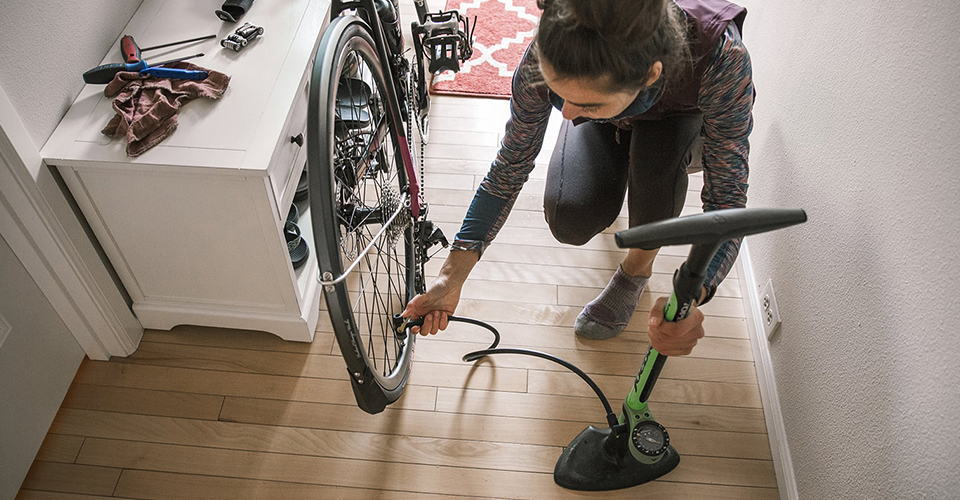 Such equipment does not spoil the appearance of the motorcycle in any way, but if necessary, it is easy to get it and pump up the wheels.
Such equipment does not spoil the appearance of the motorcycle in any way, but if necessary, it is easy to get it and pump up the wheels.
This air pump is much smaller than a motorcycle air pump. Usually it is a tube without a bottom stop, the base of which must be held with the left hand, and the stem must be moved with the right, repeating the principle of a medical syringe. Often they do not have a pressure gauge, so the wheels are inflated approximately, guided by the stiffness of the tires. More expensive modifications have a small pressure gauge, which quickly fails from shaking. You have to carry such a pump in a backpack, or fix it on a bicycle frame using specialized mounts. In extreme cases, you can use conventional tie-clamps. Usually, the flexible hose for connecting the pump to the wheel valve is removable and hides in the handle of the device, which is done for safety reasons so that the tube cannot get into the spokes during movement.
It is worth noting that due to the small dimensions of such a device, using it to inflate even small bicycle tires can be quite tired, so many cyclists prefer to use larger foot pumps, placing them in a backpack.
Modern mountain bikes, as well as some types of motorcycles, are equipped with a front air fork, the stiffness of which is determined by the amount of air pumped into it. This is a very successful technical solution that allows you to adjust the effectiveness of the suspension system depending on the weight of the cyclist or motorcyclist. To carry out the pumping of the shock absorber, you need to use a specialized high-pressure air pump. It has a very small piston, so it is able to carry out sufficient air injection with the application of muscular strength. Such a device has very modest dimensions, so its use for pumping wheels is also impractical, since it will take hours to fill the chamber.
Watercrafts must be pre-inflated to operate. It will not be possible to do this by mouth, as in the case of an inflatable life buoy, given the large volumes of cylinders. Pumps for inflatable products are specially designed for this.
It will not be possible to do this by mouth, as in the case of an inflatable life buoy, given the large volumes of cylinders. Pumps for inflatable products are specially designed for this.
Often, foot pumps and pumps are a cheap range that has a short service life. They are a design similar to the old blacksmith's bellows. The working chamber is made of a flexible material resembling a tarpaulin, which cracks over time. You can also find an air pump of the "toad" type, which is a rubber pear. An important advantage of such devices is the high speed of filling the cylinders. To increase the service life of the equipment, it must be hidden from direct sunlight. In this regard, having pumped up a watercraft on the shore, it is better to put the pump in the shade.
In most cases, hand pumps are more expensive and reliable. They are similar to automobiles, but have a large chamber and a wide piston, which ensures high performance.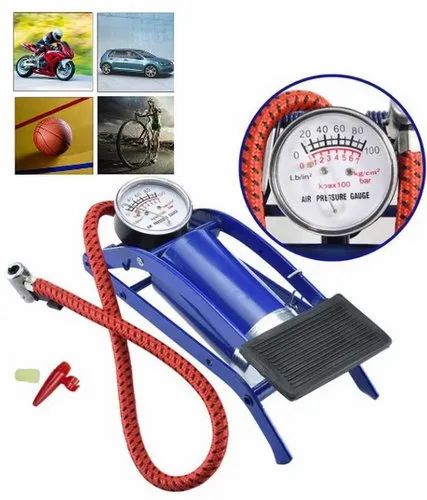 The implementation of such a technical solution became possible due to the fact that a minimum pressure is created in inflatable boats, which is several times lower than in car tires.
The implementation of such a technical solution became possible due to the fact that a minimum pressure is created in inflatable boats, which is several times lower than in car tires.
Fans of using traditional airguns, such as rifles or pistols, which are powered by compressed air rather than carbon dioxide canisters, use a specialized high pressure air pump. Typically, such equipment has its own pressure gauge, since with strong air injection in excess of the permissible norm, it is possible to break the rifle cylinder. It is worth noting that for most types of modern pneumatic weapons, the presence of a pressure gauge separately on the pump is not necessary, since they have their own sensor. Depending on the quality of the rifle or pistol, after loading it will be possible to fire from a few to almost a hundred shots.
High-pressure pumps for pneumatics are manual, which is due to the high reliability of such a technical solution. In addition, the elongated shape allows you to carry the device in a case with a rifle. These pumps can also be used to pump air into compact diving mini-cylinders, but in this case, thousands of strokes are required to create sufficient pressure even in such a small tank.
In addition, the elongated shape allows you to carry the device in a case with a rifle. These pumps can also be used to pump air into compact diving mini-cylinders, but in this case, thousands of strokes are required to create sufficient pressure even in such a small tank.
Autoblog is not affiliated with the brands featured in our articles, but when you make a purchase through the links on our site, we may earn a commission.
Don't wait until you get to the gas station to take care of your tires. These great car tire air pumps can help you in a pinch. Cars rely on inflated rubber tires to move around without damaging the components inside them. However, tires are not 100% airtight and over time air will escape from the tire causing it to deflate. Flat tires are dangerous and drivers should always be on the lookout for signs that their vehicle may have a flat tire.
However, tires are not 100% airtight and over time air will escape from the tire causing it to deflate. Flat tires are dangerous and drivers should always be on the lookout for signs that their vehicle may have a flat tire.
If you don't want to drive to the gas station or repair shop to inflate your car's tires, get your hands on one of our favorite car tire pumps. They are durable, allow you to pump the right amount of air into the tires, and most importantly, they are also portable. If that sounds like something you'd like to add to your car's emergency kit, take a look at these five car tire pumps that we think can make your life so much easier.
GSPSCN Twin Cylinder Air Compressor: Our Pick
Buy on Amazon
This GSPSCN Twin Cylinder Air Compressor starts our list strong and it's just as powerful , as it looks. It can be powered from your vehicle's power outlet, allowing you to use it where and when you need it, and comes with a complete tire inflation kit, giving you everything you need to inflate your tires right out of the box.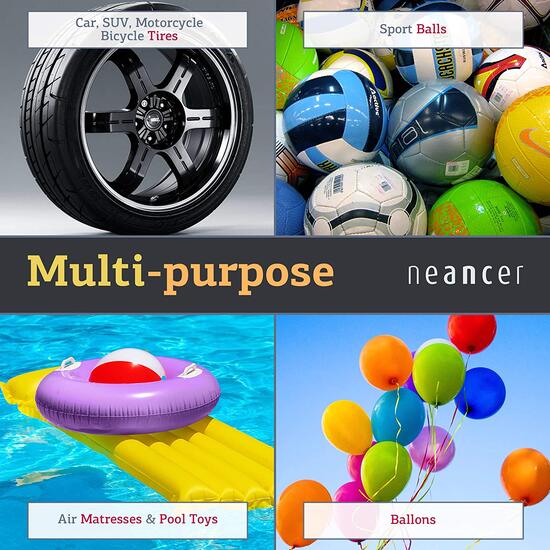 The kit includes a hose, an extension for hard-to-reach places, various adapters and even some clamps and cables. It all fits perfectly in the included carry bag, making this a great gift for those who are always on the go.
The kit includes a hose, an extension for hard-to-reach places, various adapters and even some clamps and cables. It all fits perfectly in the included carry bag, making this a great gift for those who are always on the go.
Slime 40050 12V Portable Car Air Compressor: Another great option
Buy on Amazon
There are a lot of things to learn when you first get behind the wheel and it can be hard to get used to everything. Some novice drivers may feel overwhelmed using things like air compressors and tire inflators, but luckily some of them are designed specifically for easy use - in fact, they're so easy you only need to press one.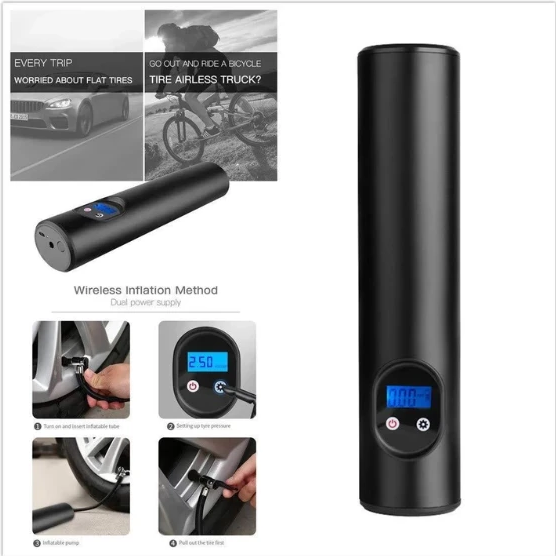 button to use them. . This one-button tire inflator from Slime is great for those who don't want to get bogged down in extra features. It has an easy-to-see green button that can be pressed at any time, as well as a pressure gauge that tells you when to stop. The inflator also features an LED light that can improve visibility if you use it in dim light or at night.
button to use them. . This one-button tire inflator from Slime is great for those who don't want to get bogged down in extra features. It has an easy-to-see green button that can be pressed at any time, as well as a pressure gauge that tells you when to stop. The inflator also features an LED light that can improve visibility if you use it in dim light or at night.
EPAuto 12V DC Portable Air Compressor Pump: also consider
Buy on Amazon
Many air compressors use an analog gauge to display pressure, but some modern compressors use a digital display instead. The benefit of a digital display is that it's often easier to read, and with LED lighting, you won't have to illuminate the sensor at night. This EPAuto portable air compressor features a bright LED display, making it easy to check your tire pressure at any time of the day (or night). This compressor pump is available in four different colors (red, blue, yellow and green) and its large LED can be directed with a conveniently located knob. It can light up your garage for night car maintenance and overall it is a reliable product with a good digital display.
This EPAuto portable air compressor features a bright LED display, making it easy to check your tire pressure at any time of the day (or night). This compressor pump is available in four different colors (red, blue, yellow and green) and its large LED can be directed with a conveniently located knob. It can light up your garage for night car maintenance and overall it is a reliable product with a good digital display.
Tire Inflator VacLife Air Compressor: Another Option
Buy on Amazon
Of all the air compressors and tire inflators on our list, this one from VacLife is perhaps the most beautiful.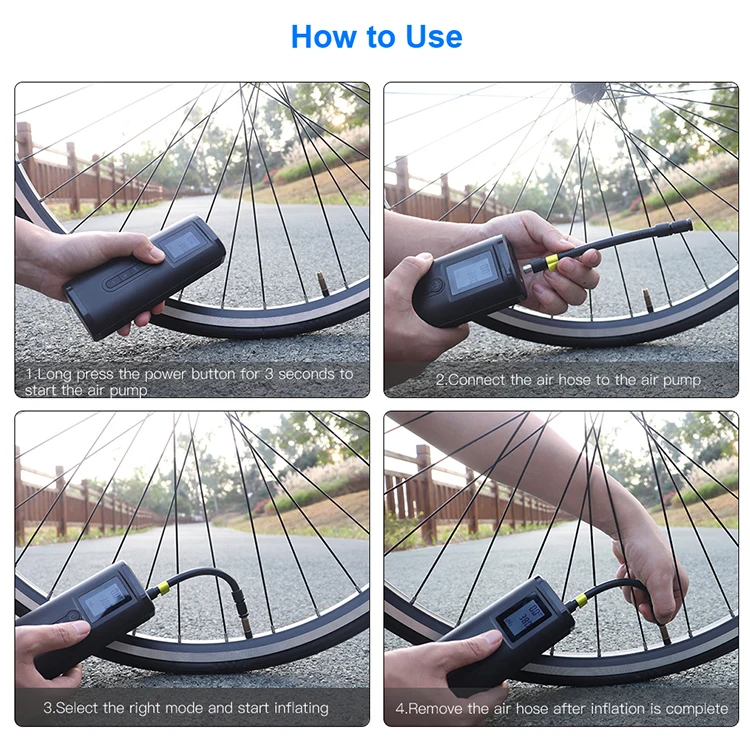 It has a modern, minimalist look, but its good looks don't come at a high price - what's most surprising about this air compressor is that it's relatively inexpensive and won't cost you more than $40. The compressor has an easy-to-read digital display and various buttons to control its settings, which go well with the design of the device. It comes with needles and adapters to blow air into most inflatables, but it can't handle anything over 50 psi (psi), so it's probably not the best choice if you're looking for something something to inflate your tires for big trucks.
It has a modern, minimalist look, but its good looks don't come at a high price - what's most surprising about this air compressor is that it's relatively inexpensive and won't cost you more than $40. The compressor has an easy-to-read digital display and various buttons to control its settings, which go well with the design of the device. It comes with needles and adapters to blow air into most inflatables, but it can't handle anything over 50 psi (psi), so it's probably not the best choice if you're looking for something something to inflate your tires for big trucks.
AstroAI Air Compressor: Also try
Buy on Amazon
If power is what you're looking for, you've definitely found it in the following product.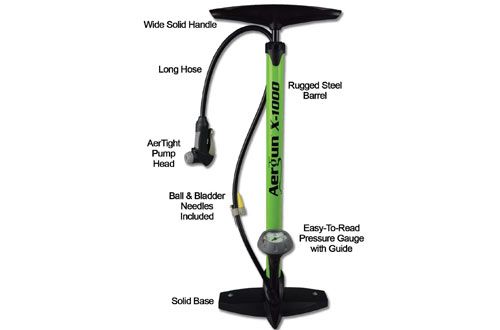 This AstroAI air compressor can handle pressures up to 100 psi and can inflate a car tire from 0 to 35 psi in less than five minutes. It also has a digital display that pairs well with one of its features, programmable pumping. You can set the desired pressure and have the compressor pump air until it reaches the set value. While this compressor is powerful, it also has some limitations. Perhaps the biggest one is the fact that after 10-15 minutes of use, you will have to turn it off to let the compressor rest. This can be a problem if you need to inflate a few tires as soon as possible, but if you just need something to inflate quickly, it probably won't be such a big deal.
This AstroAI air compressor can handle pressures up to 100 psi and can inflate a car tire from 0 to 35 psi in less than five minutes. It also has a digital display that pairs well with one of its features, programmable pumping. You can set the desired pressure and have the compressor pump air until it reaches the set value. While this compressor is powerful, it also has some limitations. Perhaps the biggest one is the fact that after 10-15 minutes of use, you will have to turn it off to let the compressor rest. This can be a problem if you need to inflate a few tires as soon as possible, but if you just need something to inflate quickly, it probably won't be such a big deal.
If you need to inflate your car tires in an emergency, you'll need a portable air pump or compressor nearby.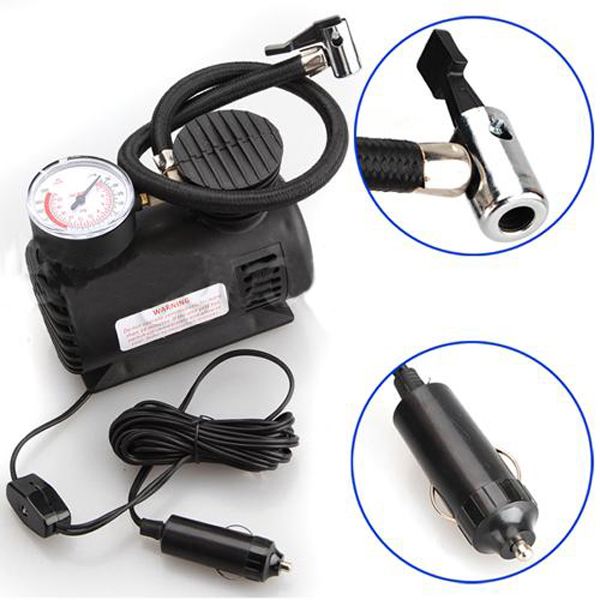 Here's everything you need to know about car tire air pumps.
Here's everything you need to know about car tire air pumps.
Inflate your tires as a last resort
The main reason many drivers invest in a good air compressor kit is that they can always inflate their tires, even in an emergency. There are many situations where you might suddenly need air - if you're in the middle of nowhere and notice that one of your tires is flat, you'll probably want to stop and pump it up as quickly as possible.
Having compressed air at all times can save you, but it can also easily save other drivers who don't have their own air compressors. If you see someone stuck on the side of the road, you can help them if they have a flat tire.
Save time and money in the long run
While not exactly expensive, tire inflation costs money. This is especially true if you have multiple cars or multiple spare tires - keeping them all inflated costs money and you will have to shell out for every tire inflation as well as taking your car(s) to a local gas station.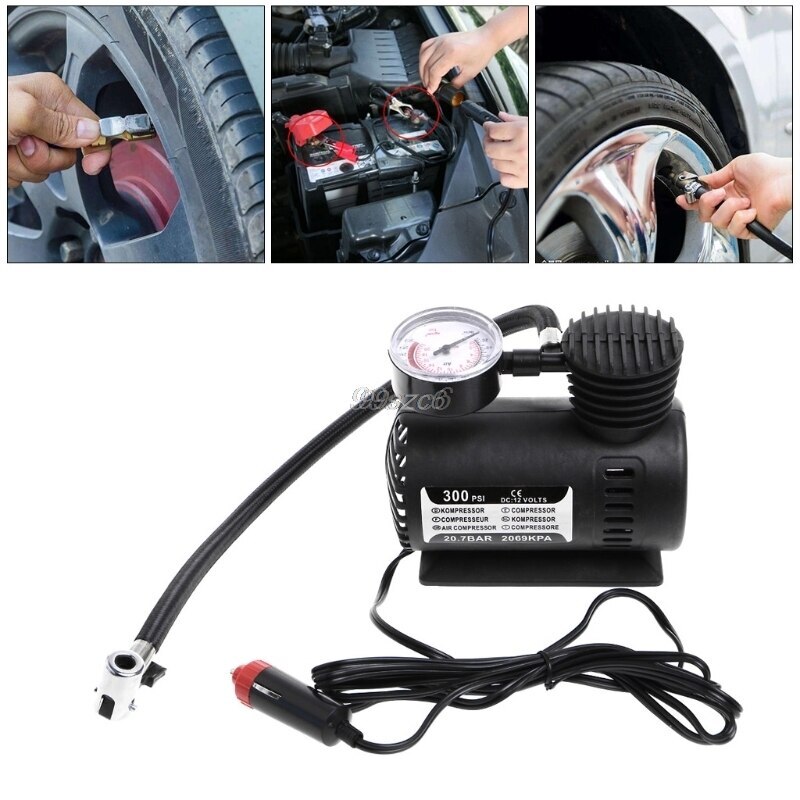 station or repair shop for refueling.
station or repair shop for refueling.
Instead of dealing with all this hassle, inflate your tires at home with your own tire pump or air compressor. It's simple and convenient, and you won't have to leave the garage to get your tires in good condition. You can also check your tires the night before and skip the gas station trip when you're ready to hit the road.
Inflate more than just tires
Air compressors are most commonly used on tires, but there are many other things that can benefit from the compressed air they provide. Always keep your sports balls inflated with an air compressor so you're always ready to play basketball, volleyball, football, and more. It's not worth training and playing with a deflated ball, but having a compressor on hand can help you stay on top of your game. games.
Air compressors also have a more limited application, such as inflating balloons. You probably won't use air compressors other than tires and balls, but it's always a good idea to know your options just in case.
Step 1: Connect the pump
To operate the car tire air pump, you first need to connect it to a power source. Car tire pumps most often use your car's outlet as a power source - it has enough power to run the pump efficiently, and your car outlet is likely to be your only power source on the road anyway.
If you have a car tire air pump that can be plugged into a wall outlet, you can use that instead. Wall outlets provide better power, and you'll get more juice out of them than a regular car outlet.
Step 2: Insert nozzle
With the hose connected to the compressor, connect the other end to your vehicle's tire through the nozzle. If you can't see it properly, we recommend using your compressor's built-in LED indicator (if you have one) or a flashlight instead.
Step 3: Start pumping
Now that everything is in place, you can start the compressor. Depending on the type of compressor you are using, you may need to follow different instructions, but the general idea is to keep a close eye on the pressure shown on the pressure gauge/display and stop when it reaches the ideal level.
For analog gauges and basic digital displays, you should follow this method. You'll want to keep an eye on the sensor or display at all times, but feel free to look away and check other things while you wait. Just make sure you're always close to the compressor in case the cable pops out either end or something else happens.
If you have a programmable digital compressor, you can set the desired pressure first instead. You can then start the compressor and it should automatically stop once it reaches the original set pressure. This means you won't need to look at the pressure gauge at all, but you should still monitor the entire process, just to be on the safe side.
There is not much difference between analog and digital car tire pumps. The main difference is in the display and both are pretty easy to understand. The advantage of digital displays is that they have special features (such as programmable inflation), so if you're interested, you can use digital rather than analog.
Automotive air compressors and tire pumps will set you back $15 to $30, some a little cheaper and some more expensive. However, you generally won't have to spend more than $50 for a decent air compressor, so try not to worry too much about the price.
Q: Are car tire air pumps safe?
Tire pumps are designed to be powered and used in cars, so they are completely safe even when you are on the side of the road.
Q: How do car tire air pumps work?
Tire pumps take air from the environment and compress it. This compressed air is then directed into the tire, inflating it until it is full.